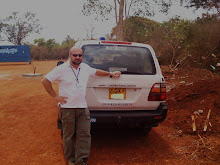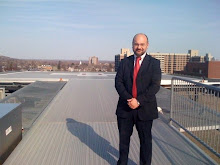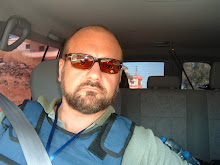 Georgia new interoperable communication system (Courtesy: Georgia Tech Research News)
Georgia new interoperable communication system (Courtesy: Georgia Tech Research News)Interoperability is a property referring to the ability of diverse systems and organizations to work together (inter-operate). The key aspect of the emergency response mechanism is the capability to bring together different responders and their apparatuses in order to work in a coordinated manner on the same platform or different communicating platforms.
In this post I want to debate around the importance of the interoperable communication as one of the emergency management milestones.
Interoperability is an important issue for law enforcement, fire fighting, EMS, and other public health and safety departments, because first responders need to be able to communicate during emergencies. Traditionally, agencies could not exchange information because they operated widely disparate hardware and radio apparatuses that were incompatible. Even the advanced agencies' information systems such as computer-aided dispatch systems (CAD) and records management systems (RMS) functioned largely in isolation, so-called "information islands." Agencies tried to bridge this isolation with inefficient, stop-gap methods while large agencies began implementing limited interoperable systems. These approaches were inadequate and the nation's lack of interoperability in the public safety realm become evident during the 9/11 attacks on the Pentagon and World Trade Center structures. Further evidence of a lack of interoperability surfaced when agencies tackled the aftermath of the Hurricane Katrina disaster.
To reach interoperability agencies should dialog on same platform-based systems. First responders have complex needs for specialized equipment and personnel and communications infrastructure is one of several critical priorities. The U.S. Department of Homeland Security’s Federal Emergency Management Agency
(FEMA) assists first responders through the Commercial Equipment Direct Assistance
Program (CEDAP). Since 2005, CEDAP has provided $69.7 million in equipment and
Equipment training to law enforcement agencies, fire, and other emergency responders.
But structure is not all. Procedures and a tired approach to communication must be shared and agree upon. Communication plans at both horizontal (among agencies/operators on the ground) and vertical level (from local to regional to national) should be designed.
Other important concept related to successful interoperable communication is redundancy.
Communication means must be multiple, of different nature and connected with different networks as well as promptly available. Such approach is considered vital when the environmental conditions created by the emergency related event are such that the most common means could be out of service (land line, cellular phone, emails, etc). I remember that when I was working with the UN, every mobile unit to be compliant with the Minimum Operating Standard Security (MOSS) needed to avail the following systems: Cellular phone, satellite phone, VHF/UHF radio, HF radio. Other redundant communication means are Voice over IP, emails, land line, amateur radio etc.
Such redundant system has to be maintained operational and regular drills should be conducted to test them as well as the capability of the operators to handle them. I recall during the conduction of Risk Security Assessment, the most common problems were the most (apparently) simple once too: batteries not charged, chargers not available, missing sim cards (for sat phones), operators scarce knowledge of use of radio apparatuses as well as call signs and communication procedures, etc.
Drills are absolutely important to keep the network maintained and operators refreshed.
The impression I have is that emergency entities have accomplished great results in these recent years on the path of interoperability but a lot yet remain to be done. Just to mention one example: Hurricane Katrina (2005) death toll: 1836, Hurricane Gustav (2008) death toll: 0. Both hurricanes hit same area. I don’t want to speculate on the causes of failure and success of the mentioned rescue operations but it’s evident that interoperable communications played a key role in 2008. Analysis of responses to hurricanes and whether related catastrophic events could be interesting topics for future posts.

Hurricane Gustav - Satellite photo (Courtesy: philantromedia.org)




















